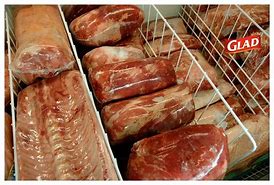Market Growth, Trends, and Forecast for Frozen Meat Market
Market Overview
Certain meat
products are only available in particular seasons. To fulfill the demand for
meat products and overcome the issue of seasonality, manufacturers are focusing
on introducing various types of frozen items in this category. Change in
lifestyle of people across the globe and increase in demand for ready to eat
food are the prime factors driving the market globally. Over the projected period, the market is
expected to rise at a faster rate due to a growing working population, rising
per capita income in developing nations, and increased demand for frozen food
products.
In 2018, the worldwide frozen
meat market was worth USD 73.3 billion, and it is expected to grow at a
CAGR of 4.4 percent from 2019 to 2025. Changes in lifestyle and dietary tastes,
seasonality, and the acceptance of ready-to-eat food are all factors
contributing to the market's rise. Continuous efforts to deliver the best
service and technological developments to extend the shelf life of frozen
products.
Market Growth
Due to the
easily consumable and time-saving nature of the product, the industry is
growing popularity among consumers, particularly among young professionals. By
developing product variants, this scenario is likely to provide prospective
chances for the global market. Over the last few years, consistent economic expansion accompanied by
the development of the mining industry has resulted in an increase in the
number of job opportunities, consequently raising the average income of
consumers. Furthermore,
fast-paced lifestyles have increased the spread of e-commerce and online meal
delivery services, thus food joints and restaurants all over the world rely on
frozen meat products to meet demand for meat dishes. This scenario is projected
to drive global market expansion in the future years.
Types
of Product
Beef, chicken, pork, and other products are segmented in the
market. Due to increased consumption and import of frozen beef by Asian
countries and on a global scale, frozen beef had the greatest market share of
more than 30.0 percent in 2018. Over the projected period, the beef segment is
expected to increase at the fastest rate, followed by pork and chicken. Beef
demand is predicted to rise as a result of its high protein content when
compared to other meat types. Pork demand is driving the market, which is being
driven by frozen meat imports and exports between countries.
Channel of Distribution
Convenience stores, supermarkets and hypermarkets, and
Internet are the three types of distribution channels. Over the projected
period, the supermarket and hypermarket segment is predicted to grow at the
quickest CAGR. Walmart, Costco, and the Real Canadian Superstore are among the
country's most popular retail outlets. These stores dominate the market,
accounting for 15.0 percent of total sales. Consumers demand proper scanning of
the product, legitimacy, contents, and variety before purchase, therefore the
offline channel has been driving the industry. The online distribution channel,
however, is gaining traction among customers, thanks to increased smartphone
and internet access, as well as the convenience afforded by e-commerce
platforms.




Comments
Post a Comment